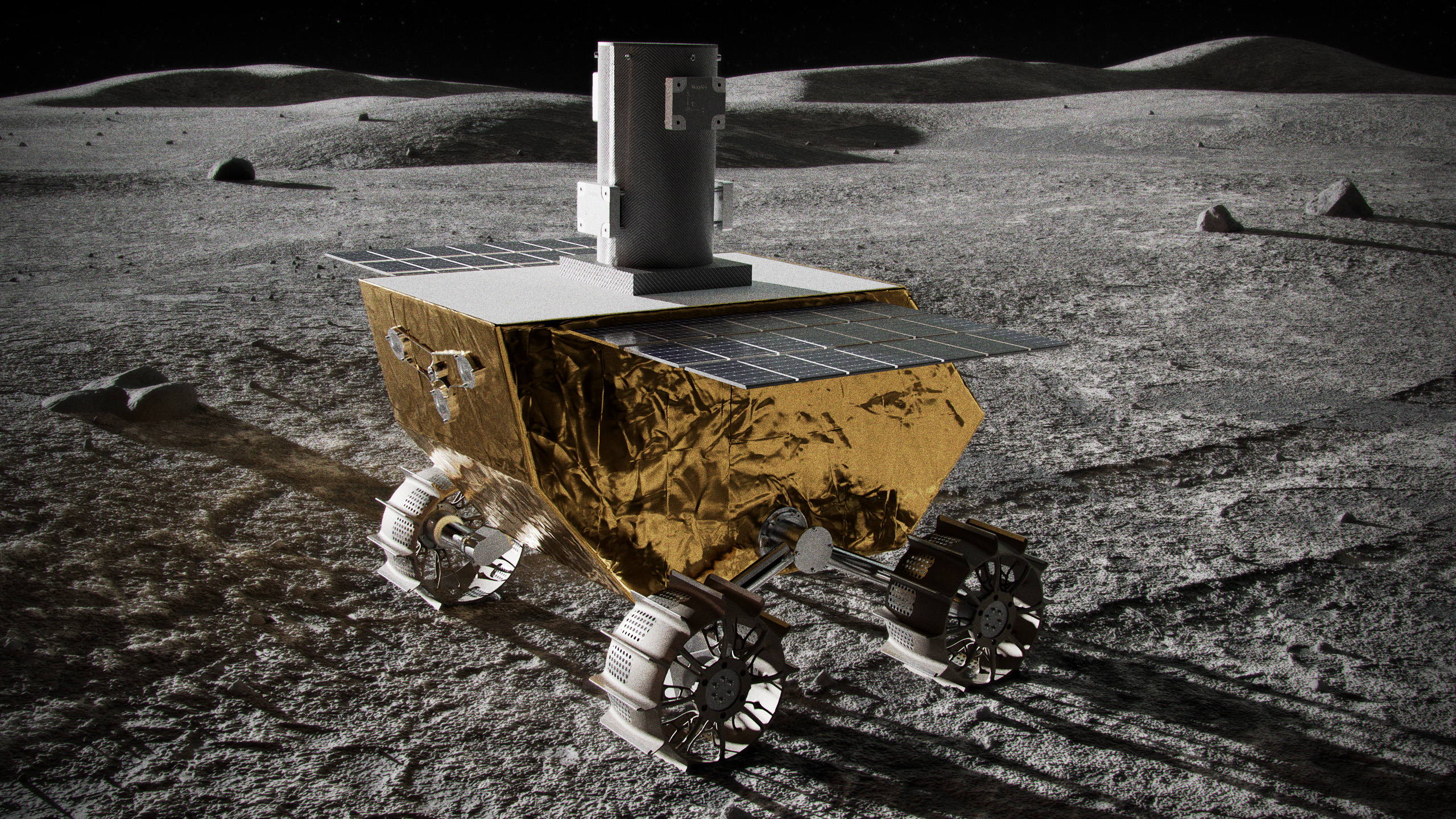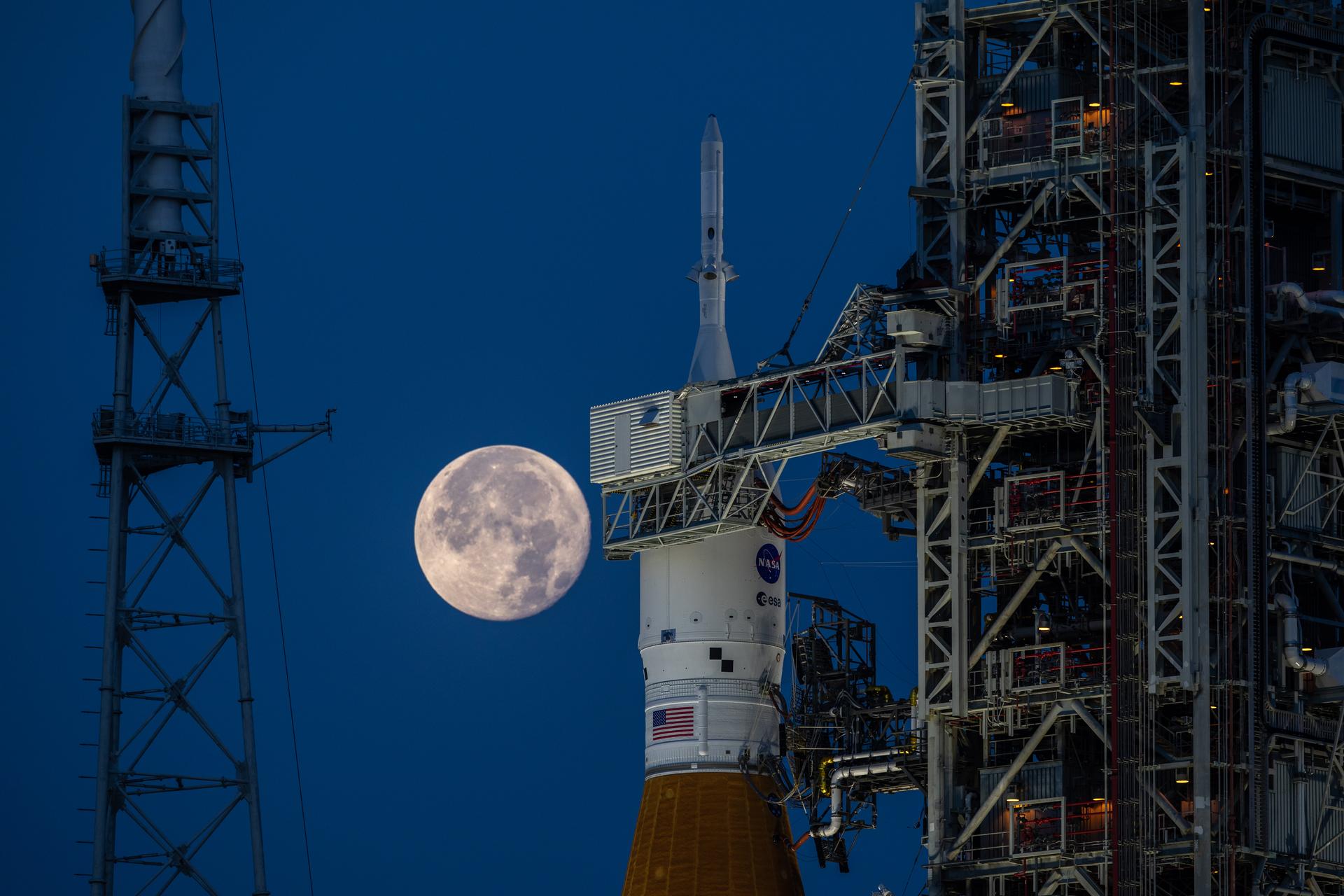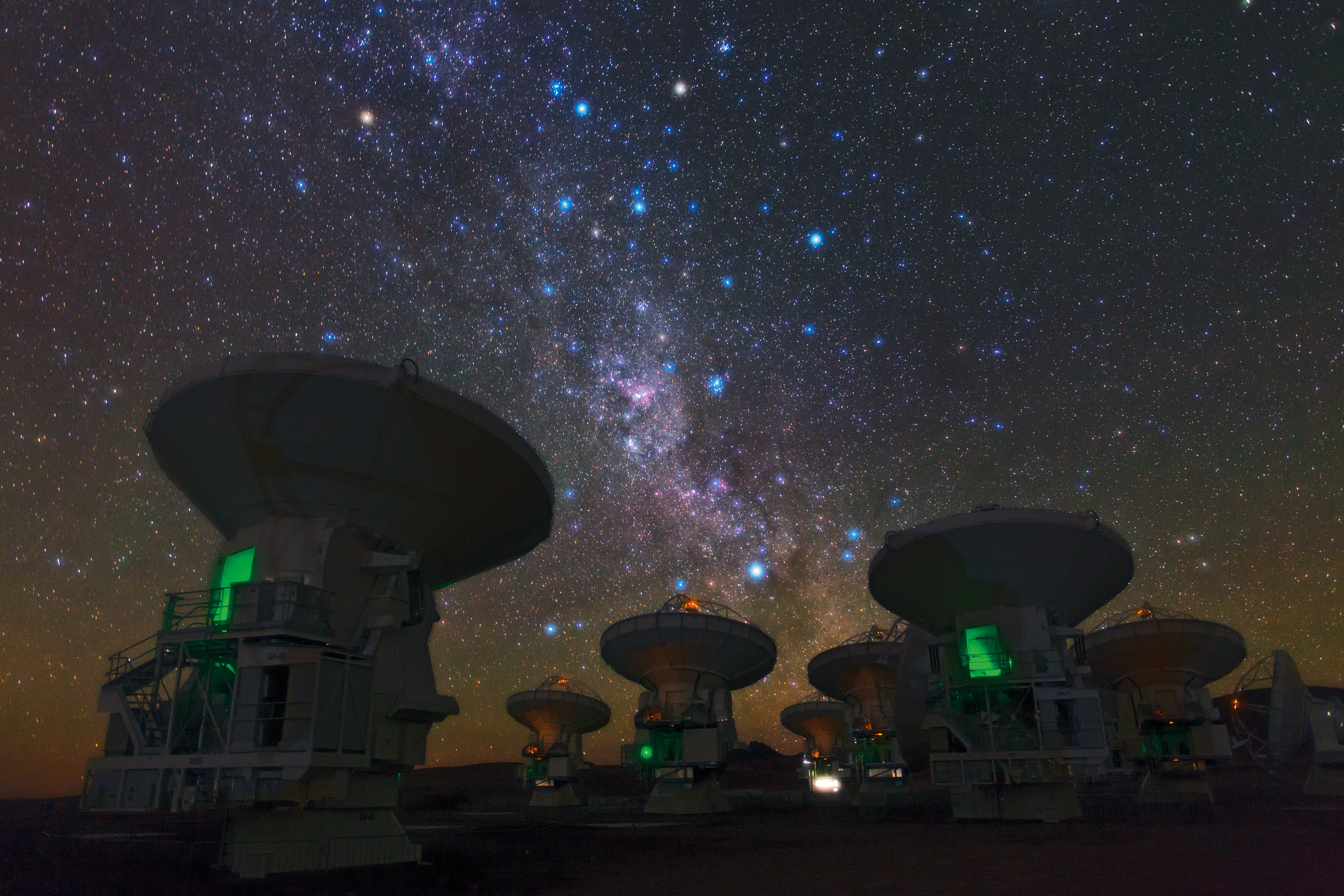The Moon is a cornerstone of solar system science and the closest world beyond our own on which humans may establish a sustainable presence. In the coming decade, experts estimate as many as 100 missions will launch into cislunar space — the area between geosynchronous orbit and the gravitationally balanced Lagrange point beyond the Moon. The scientific, economic and national security value of cislunar space has brought about an era of intense international cooperation and competition, marked by unprecedented utilization of space beyond geosynchronous orbit.
With its broad and distinguished base of cislunar experts and a demonstrated ability to work across the civil and national security domains, the Johns Hopkins Applied Physics Laboratory (APL) in Laurel, Maryland, is uniquely positioned to integrate and implement critical elements of our nation’s lunar strategy. It is making contributions that aid the development of cislunar infrastructure, ensure the nation’s assets remain protected, support the establishment of a sustainable cislunar presence and advance pioneering science.
1. Fostering Nationwide Collaboration

On behalf of NASA, APL leads the Lunar Surface Innovation Consortium (LSIC). Part of NASA’s larger Lunar Surface Innovation Initiative (LSII), LSIC harnesses the nation’s creativity and resources to keep the United States at the forefront of lunar exploration. Bringing together more than 300 organizations from the academic, commercial and government sectors, the consortium focuses on developing technology for power systems, in situ resource utilization, dust mitigation, excavation and construction, and access and operations in extreme environments.
In partnership with the Defense Advanced Research Projects Agency (DARPA), the Laboratory also manages the Lunar Operating Guidelines for Infrastructure Consortium (LOGIC), a new initiative that will identify and propose interoperating standards for commercial infrastructure on the Moon. Working closely with members of LSII and LSIC, LOGIC will accelerate the development of consensus-driven standards for areas such as power distribution, communications, PNT (position, navigation and timing), mobility, in situ resource utilization, mining, robotics and construction. APL will facilitate working groups to assess the impact of potential technologies on the broader space community and develop community-recommended solutions to close interoperability gaps.
In relation to national security, APL has annually hosted a cadre of experts since 2020 for its Cislunar Security Conference, the results of which were synthesized as input to the White House’s National Cislunar Science and Technology Strategy, released at the November 2022 conference. More than 500 individuals are scheduled to attend this year’s gathering at APL from Dec. 5 to 7.
The Laboratory is also leading a large-scale tabletop exercise, joining stakeholders and decision-makers for a “dress rehearsal” simulation that exercises potential cislunar space friction points. The results will enable leaders to streamline processes and policies for real-world operations in this domain.
2. Developing Communications and Position, Navigation and Timing Solutions

Working with NASA’s Space Communications and Navigation program, the Internet Engineering Task Force, the Internet Society, and the Interagency Operations Advisory Group, APL is developing advanced networking technologies to enable internet-like concepts for space exploration. Ed Birrane, a space communications expert at APL, leads a team that wrote the transport and security protocols that NASA has baselined as required for future communications on the Moon.
“Communications to the Moon, and all of deep space, have historically consisted of dedicated, bespoke telecommunications systems — each one a precious asset,” Birrane said. “As humanity goes back to the Moon and beyond, we are designing advanced networking technologies to enable internet-like concepts that will revolutionize space exploration.”
Beyond communications, APL experts are working on the development of an incremental approach to implementing GPS-like capabilities in cislunar space, avoiding the need for the 24 custom-made precision satellites used for Earth’s GPS system that would cost billions of dollars.
“APL has deep historical expertise in PNT, starting with our work on Transit, the world’s first satellite navigation system, created in the 1950s and 60s,” said Steve Parr, PNT and Cislunar program manager at APL. “We are bringing that experience, and our institutional lunar expertise, to explore and advance a continuum of PNT offerings for the Moon.”
3. Leading Lunar Science Missions

Leveraging its world-class expertise in instrument development and mission planning, the Laboratory leads NASA’s Lunar Vertex mission, scheduled to launch and land on the lunar surface in 2024. This agile, fast-moving collaboration with partners Intuitive Machines, Lunar Outpost, Redwire Space and the Southwest Research Institute aims to explore a 43-mile-wide (70-kilometer-wide) swirl of magnetized rock called Reiner Gamma to answer longstanding questions about the origin of these magnetized structures and how they interact with the high-speed stream of energetic particles emanating from the Sun.
A second collaboration in partnership with Canadensys Aerospace Corporation, NASA’s Jet Propulsion Laboratory and the University of Oxford focuses on building an infrared imager to ride aboard Canada’s first lunar rover. Dubbed the Lunar Advanced Filter Observing Radiometer for Geologic Exploration (LAFORGE), the instrument will collect a wide swath of infrared light, making it sensitive down to temperatures of minus 423 degrees Fahrenheit (minus 253 degrees Celsius) so it can measure the full range of polar temperatures on the lunar surface, including in permanently shadowed regions where water ice is located. The APL team is on track to have the instrument completed on schedule in late 2025.
“LAFORGE will be the first instrument to fly to the lunar surface with the capability of measuring the very low temperatures found in some permanently shadowed regions,” said Benjamin Greenhagen, LAFORGE principal investigator from APL. “Not only is LAFORGE going to provide fantastic science measurements, but the LAFORGE team will be integral to helping decide which shadowed regions this lunar rover mission should explore.”
4. Defining the Surface Science Strategy for Human Exploration

APL leads a multi-institutional team to leverage their collective expertise in support of NASA’s Artemis III mission.
Led by APL planetary scientist Brett Denevi, the Artemis III Geology Team (A3GT) will support the design and execution of the surface campaign as well as evaluate the data and lunar samples returned by the mission. Focusing on scientific objectives such as understanding the Moon’s impact history, early evolution, volatile materials and surface changes near the poles, the team’s goal is set the stage for how science will be done during the Artemis missions to accomplish those overarching objectives and revolutionize our understanding of the Moon and the cislunar environment.
“We are excited to represent the lunar science community during this historic mission,” Denevi said. “Our team’s focus on maximizing the science accomplished by the Artemis III astronauts will ensure the samples and data collected enable transformative discoveries for decades to come.”
5. Enabling Space Domain Awareness Around the Moon

APL is exploring technologies to improve situational awareness of objects in cislunar space and on the lunar surface to ensure missions stay safe while exploring the Moon and cislunar space and safeguard operators from inadvertently interfering with other missions.
Aerospace engineering experts are exploring novel uses of existing technology, such as Very Long Baseline Interferometry (VLBI), to improve spacecraft sensing and tracking. Often used in astronomy to observe distant astronomical phenomena, VLBI’s multi-telescope setup could be part of a larger system to improve spacecraft tracking and provide higher resolution than is possible with even the largest single telescope.
Simultaneously, another APL engineering team is gathering data to form a database of artificial objects orbiting cislunar and deep space. This catalog will help mission managers avoid interferences, like collisions, and operate more safely.
Related Topics
For Media Inquiries
For all media inquiries, including permission to use images or video in our gallery, please contact:
Michael Buckley
All Media Resources

